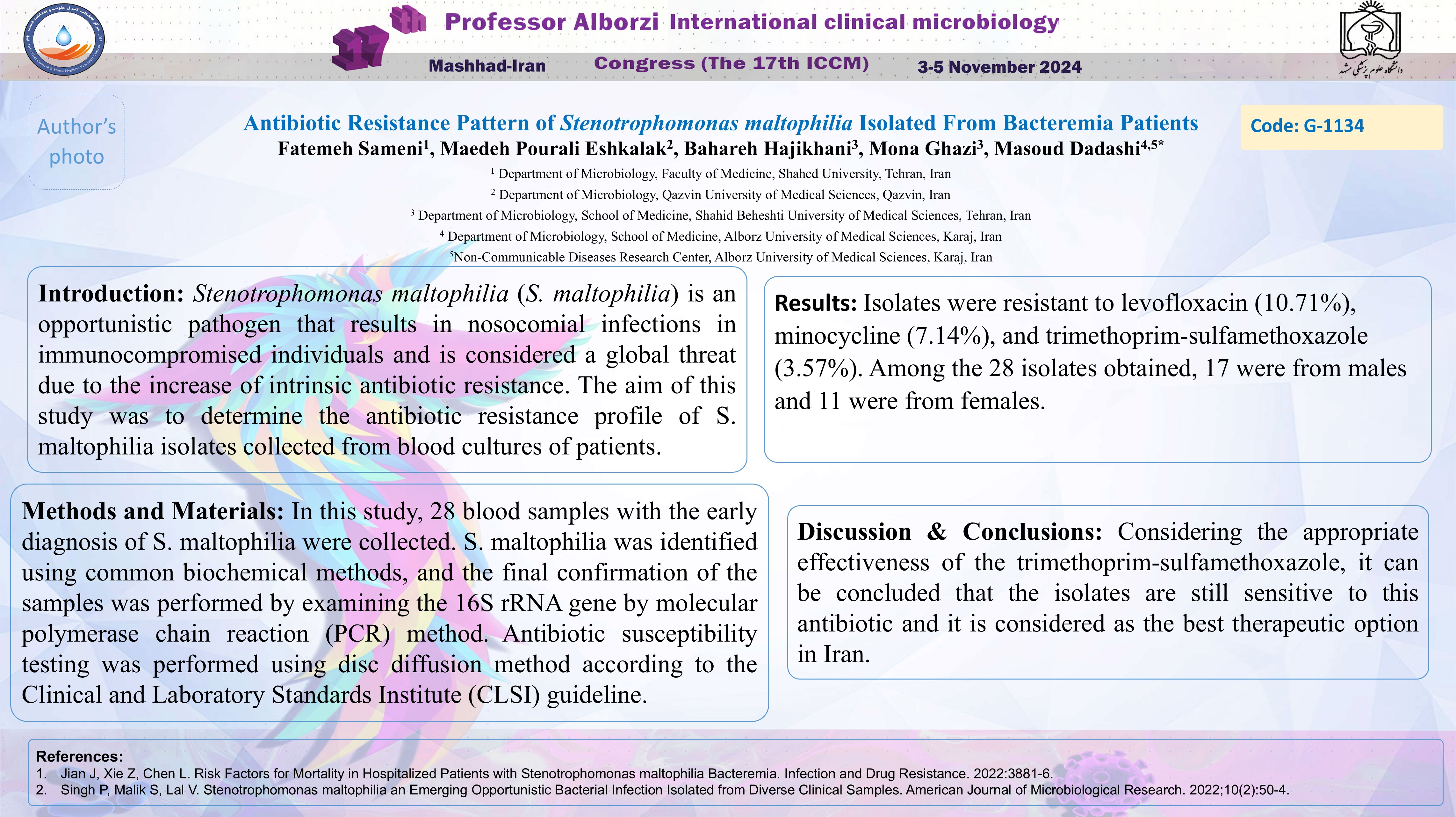تعیین الگوی مقاومت آنتی بیوتیکی استنوتروفوموناس مالتوفیلیا جدا شده از بیماران مبتلا به باکتریمی
کد: G-1134
نویسندگان: Fatemeh Sameni ℗, Maedeh Pourali Eshkalak, Bahareh Hajikhani, Mona Ghazi, Masoud Dadashi ©
زمان بندی: زمان بندی نشده!
دانلود: دانلود پوستر
خلاصه مقاله:
خلاصه مقاله
Background and Objective: Stenotrophomonas maltophilia (S. maltophilia) is an opportunistic pathogen that results in nosocomial infections in immunocompromised individuals and is considered a global threat due to the increase of intrinsic antibiotic resistance. The aim of this study was to determine the antibiotic resistance profile of S. maltophilia isolates collected from blood cultures of patients. Materials and Methods: In this study, 28 blood samples with the early diagnosis of S. maltophilia were collected. S. maltophilia was identified using common biochemical methods, and the final confirmation of the samples was performed by examining the 16S rRNA gene by molecular polymerase chain reaction (PCR) method. Antibiotic susceptibility testing was performed using disc diffusion method according to the Clinical and Laboratory Standards Institute (CLSI) guideline. Results: Isolates were resistant to levofloxacin (10.71%), minocycline (7.14%), and trimethoprim-sulfamethoxazole (3.57%). Among the 28 isolates obtained, 17 were from males and 11 were from females. Conclusion: Considering the appropriate effectiveness of the trimethoprim-sulfamethoxazole, it can be concluded that the isolates are still sensitive to this antibiotic and it is considered as the best therapeutic option in Iran.
کلمات کلیدی
Stenotrophomonas maltophilia, Antibiotic resistance, Disc diffusion
